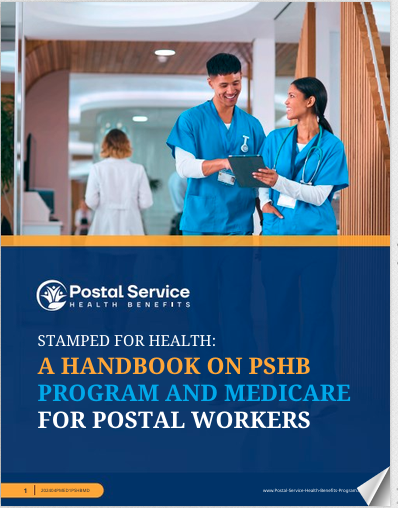Key Takeaways
- Open Season dates: November 11 to December 9, 2024, is your window to select or switch PSHB plans.
- Medicare Part B requirement: For Medicare-eligible Postal Service retirees, enrolling in Part B is essential to keep PSHB coverage.
Ready for Open Season? Here’s What You Need to Know
Open Season is your chance to evaluate health coverage for 2025, and it’s especially significant this year for postal employees and retirees transitioning to the Postal Service Health Benefits (PSHB) program. Whether you’re looking to change plans or simply stay informed, let’s walk through the essential steps to navigate your options and make the best choice for your needs.What is PSHB?
The PSHB program is new for 2025, exclusively tailored for U.S. Postal Service (USPS) employees, retirees, and their eligible family members. Moving away from the Federal Employees Health Benefits (FEHB) Program, PSHB brings a dedicated set of health plan options for postal workers. The coverage remains comprehensive, but you’ll want to check the specific plans, premiums, and benefits designed for postal employees to see what suits you.Key Dates and Deadlines for PSHB Open Season
Before we jump into plan specifics, let’s cover the timeline:- Open Season Period: November 11 to December 9, 2024.
- Coverage Start Date: January 1, 2025.
Who Needs to Take Action This Open Season?
Understanding if you need to act is crucial. Here’s a quick breakdown:- Current FEHB Enrollees: If you’re already enrolled in an FEHB plan, you’ll be automatically transitioned to a similar PSHB plan for 2025. However, reviewing the new options is recommended to confirm that your auto-enrolled plan is the best choice.
- Medicare-Eligible Retirees: If you’re retired, Medicare-eligible, and plan to maintain PSHB coverage, enrolling in Medicare Part B is required. An exception applies if you retired on or before January 1, 2025, and have not yet enrolled in Part B.
- New Enrollees: If you’re new to PSHB or previously opted out of FEHB, this is the perfect time to explore the PSHB plan options.
How to Choose Your PSHB Plan
Selecting a health plan involves several factors, including cost, coverage, and any specific health needs. Here’s how to weigh each factor during Open Season.1. Understand Your Coverage Needs
Consider your health needs and those of any dependents who’ll be covered under your plan. For example:- Routine Health Maintenance: If you primarily need preventive care and annual checkups, most PSHB plans offer similar preventive coverage. However, consider any additional services or out-of-pocket costs.
- Chronic Conditions: If you manage ongoing health conditions, look closely at coverage for specialist visits, prescription drug costs, and out-of-pocket maximums to see if your preferred providers are in-network.
2. Review the Premiums and Out-of-Pocket Costs
While plan premiums can vary, the PSHB program aims to provide postal workers with fair and affordable options. Compare:- Monthly Premiums: Choose a premium that fits your budget, considering any additional costs for family members.
- Deductibles and Coinsurance: Look at both deductibles and coinsurance to understand your overall annual costs, especially if you expect to use healthcare services frequently.
- Out-of-Pocket Maximums: Plans have different out-of-pocket maximums, which set a limit on how much you’ll pay each year. If you’re planning for high healthcare needs, consider a plan with a lower maximum.
3. Check Medicare Part B Integration (For Medicare-Eligible Retirees)
For retirees eligible for Medicare, coordinating with Medicare Part B can bring additional cost savings and extended coverage. Enrollment in Medicare Part B is mandatory for some postal retirees who want to retain PSHB coverage. Confirm your eligibility and, if required, sign up to avoid coverage issues.Key Features of PSHB Plans
The PSHB plans offer a range of benefits designed with postal workers’ needs in mind. Let’s look at what you can generally expect from these plans:Preventive Care and Routine Services
Most PSHB plans will cover preventive care, including annual physicals, immunizations, screenings, and wellness visits. For postal workers who prioritize regular health checkups, these services provide baseline coverage without out-of-pocket costs.Prescription Drug Coverage
PSHB plans generally offer strong prescription coverage. When reviewing plans, check formulary tiers, co-pay levels, and the network of participating pharmacies. If you regularly take medication, see how each plan treats your prescriptions to understand what you’ll pay out-of-pocket.Specialty Services and Provider Networks
For specialized health services, such as physical therapy or mental health care, confirm that your preferred providers are within the network. Out-of-network providers tend to cost more, so if there’s a particular facility or provider you prefer, it’s wise to ensure they participate in the PSHB network.Making the Most of Open Season Resources
The PSHB Open Season is designed to make the decision process easy and accessible. Take advantage of the following resources:- OPM’s PSHB Page: The U.S. Office of Personnel Management (OPM) provides detailed plan comparisons and other resources for PSHB participants. Look for updated information, including plan comparisons and frequently asked questions, to help make informed decisions.
- Plan Comparison Tools: These tools allow you to compare PSHB plans based on coverage details, premiums, and other factors. This can be an efficient way to narrow down options before making your final decision.
- Open Season Health Fairs: Health fairs are offered virtually and in some locations in-person, providing opportunities to ask questions and get answers about specific plans.
- Ask for Help: Speak to a benefits specialist or consult with a representative during Open Season to clarify any remaining questions about PSHB options.
Enrolling in Your Plan Choice
Once you’ve decided on a plan, make sure you complete the enrollment process by December 9, 2024. You’ll enroll via PostalEASE or other approved enrollment channels. Double-check your choices and keep a record of your selections for reference. If you’re auto-enrolled but decide you want a different option, you can make a switch within the Open Season period, and your new selection will take effect on January 1, 2025.Tips for Retirees and Those New to PSHB
Navigating Open Season as a retiree or new participant in the PSHB program can be especially important. Keep these pointers in mind:- Medicare Part B Enrollment: If you’re Medicare-eligible, sign up for Medicare Part B to maintain PSHB coverage, especially if you’ve retired after January 1, 2025. Missing this step could lead to coverage disruptions.
- Understanding Auto-Enrollment: Retirees and current FEHB enrollees will be auto-enrolled in a similar PSHB plan for 2025. However, you still have the option to switch if another plan better suits your needs.
- Adjusting Your Plan as Needed: Life changes, such as new dependents, marriage, or a change in health needs, might affect your choice of coverage. If any of these situations apply, Open Season is the ideal time to adjust your plan.






